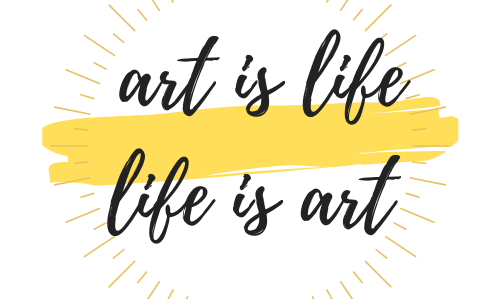From prehistoric cave paintings to digital NFTs, art has been humanity’s most profound and enduring form of expression. It speaks when words fall short. It preserves culture, provokes thought, stirs emotion, and imagines the impossible. Art is more than paint on canvas or notes on a staff — it is the language of the soul, a mirror to society, and a timeless bridge across generations and geographies.
What Is Art?
Art defies a single definition because it takes infinite forms: visual, auditory, tactile, and performative. Broadly, art can be understood as the creative expression of human imagination, experience, or emotion. Whether through drawing, painting, sculpture, music, dance, literature, architecture, or film, art communicates ideas, values, and stories in a unique and personal way.
While styles and interpretations vary, all art shares a common purpose: to connect, to express, and to inspire.
The Evolution of Art Through History
The story of art is the story of humanity. Across eras, art has evolved not just in technique, but in meaning and impact.
1. Prehistoric Art
Cave paintings in Lascaux or Bhimbetka date back over 30,000 years, revealing early humans' need to depict their lives, beliefs, and surroundings.
2. Ancient Civilizations
In Egypt, Mesopotamia, Greece, India, and China, art served religious, political, and decorative functions. Temples, statues, murals, and manuscripts reflected divine worship and royal power.
3. The Middle Ages
Art in medieval Europe focused on Christianity, with stained glass windows, illuminated manuscripts, and Gothic cathedrals illustrating biblical stories.
4. The Renaissance
This was a golden age of realism, perspective, and scientific exploration in art. Masters like Leonardo da Vinci, Michelangelo, and Raphael merged humanism with creativity.
5. Modern and Contemporary Art
From impressionism and cubism to surrealism and abstract expressionism, the 19th and 20th centuries broke traditional boundaries. Today, digital and conceptual art push the limits of what art can be.
The Functions of Art
Art serves many purposes across different societies and times. Some of the most important include:
-
Cultural Preservation – Art records traditions, beliefs, and customs, passing them from generation to generation.
-
Emotional Expression – It allows individuals to express joy, pain, love, fear, and more.
-
Social Commentary – Art challenges norms, critiques injustices, and sparks dialogue on political and ethical issues.
-
Aesthetic Beauty – Art brings beauty and inspiration into everyday life.
-
Spiritual Connection – Art has long been used in religious rituals, temples, and meditation.
-
Therapeutic Healing – Art therapy helps people process trauma, anxiety, and other mental health challenges.
Forms of Art
Art can take countless forms. Here are some of the major categories:
-
Visual Arts – Painting, sculpture, photography, printmaking, installation
-
Performing Arts – Dance, theater, music, mime, circus arts
-
Literary Arts – Poetry, prose, drama, storytelling
-
Digital and Multimedia Arts – Graphic design, animation, virtual reality, digital painting
-
Craft and Folk Arts – Pottery, weaving, embroidery, metalwork, traditional toys and masks
Each form has its own tools, history, and meaning — but all share the desire to move and communicate.
The Role of Art in Society
In times of change, uncertainty, or conflict, art becomes a powerful agent of reflection and revolution.
-
Inspiration and Hope – Art gives people a vision of what is possible.
-
Voice of the Voiceless – Marginalized communities have used art to reclaim identity and share untold stories.
-
Education and Awareness – Art teaches history, values, and empathy in a more engaging way than textbooks.
-
Economic Contribution – Art fuels industries like design, fashion, film, and tourism, supporting millions of livelihoods.
Especially in a globalized, digital age, art has the power to cross borders and unite people with a shared sense of humanity.
Art and the Individual
Art isn’t only for the famous or professional — it is for everyone. Whether you draw, sing, dance, write, or simply appreciate the work of others, engaging with art improves your well-being. Studies show that making or viewing art can:
-
Reduce stress and anxiety
-
Improve memory and focus
-
Boost creativity and critical thinking
-
Increase empathy and emotional intelligence
-
Provide a sense of accomplishment and joy
In schools, art education enhances learning across subjects and helps children explore identity and imagination.
The Future of Art
As technology evolves, so does art. Artificial intelligence, virtual reality, and digital platforms are creating new ways to produce, experience, and share art. Yet even in this high-tech world, the core of art remains the same: human connection.
Tomorrow’s artists may create in pixels instead of pigments, but their desire to tell stories, express emotion, and shape culture will endure.
Conclusion: Art Is the Pulse of Civilization
Art is not a luxury — it is a necessity. It nourishes the soul, opens the mind, and builds the bridges that keep our world human. It has the power to document the past, question the present, and imagine the future.
In every brushstroke, in every verse, in every melody — art tells us who we are and who we can become.
Because when words fail, art speaks. And it speaks to everyone.

